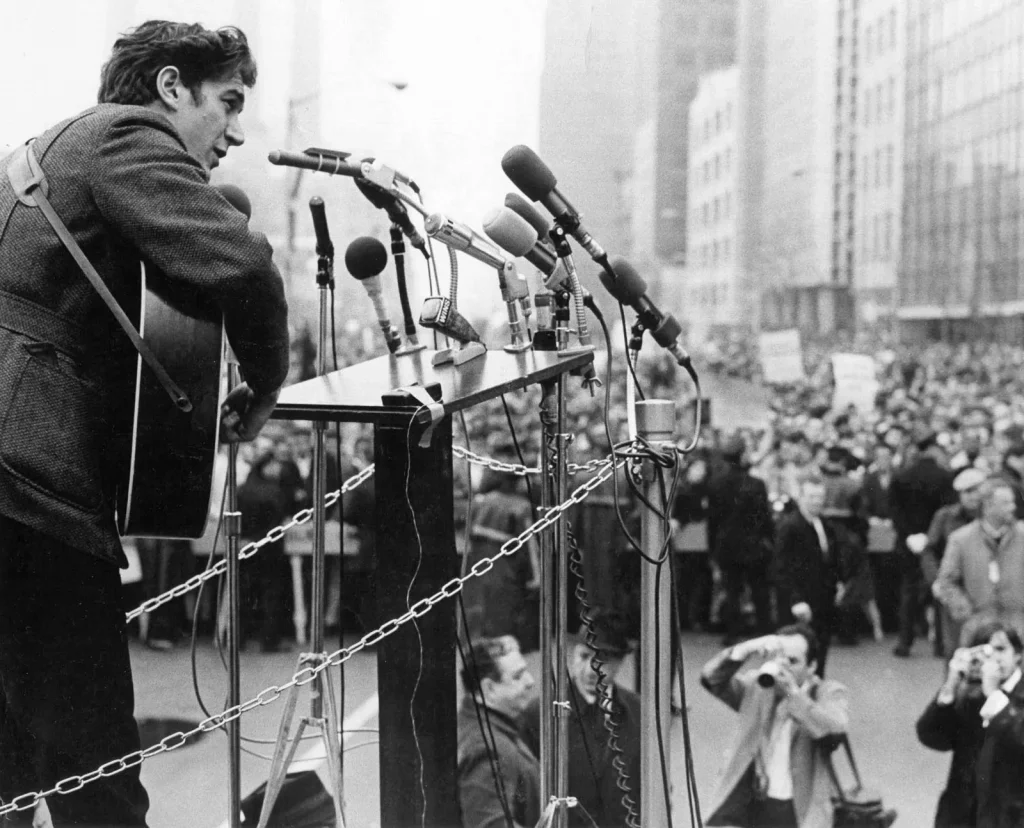
Following the fall of Sài Gòn (now Thành phố Hồ Chí Minh) on 30 April 1975, the experiences and contributions of South Vietnamese war veterans were largely erased from public memory. In recent years, efforts to address this erasure have included the rediscovery of pre-1975 Vietnamese music, particularly Nhạc vàng (“yellow music”), which refers to popular songs of South Vietnam, many of which were composed before 1975. Capturing the realities of war and the lives of Vietnamese soldiers (người lính), Nhạc vàng offers a valuable historical perspective, shedding light on the struggles and hardships faced by South Vietnamese soldiers. Deeply embedded in the Vietnamese diaspora, its enduring melodies provide a crucial link to their ongoing struggles and memories within today’s geopolitical landscape. Over time, Vietnamese music—ranging from contemporary popular songs to poignant war ballads—has evolved into a powerful tool for preserving the voices of those silenced by history. For many South Vietnamese veterans, music became an emotional refuge, helping them navigate fading nostalgia and the painful memories of the Vietnam War.

For many U.S. soldiers, popular music played a crucial role in shaping their experiences of the war. A Kentucky rifleman who spent his tour trekking through the central highlands of Vietnam recalled Nancy Sinatra‘s These boots are made for walkin’ as a defining song. A tunnel rat, who used to blow smoke into Viet Cong tunnels, remembers Jimi Hendrix’s Purple haze. For an African American marine reeling from the assassination of Martin Luther King Jr., it was Aretha Franklin’s Chain of fools. And for countless others, songs like Country Joe and the Fish’s I feel like I’m fixin’ to die, Creedence Clearwater Revival’s Who’ll stop the rain, and The Animals’ We gotta get out of this place became anthems of their war experience. Popular music was central to the American experience in Vietnam, bridging the gap between troops and the home front, while providing a soundtrack to the emotional complexity of the war they were thrust into. Music was an often overlooked yet crucial part of the conflict, influencing the experiences and memories of every group of Vietnam veterans.

Music also played a crucial role in shaping public perception of the Vietnam War in the United States, as songs reflected both support and opposition to the conflict. Unlike the professionally produced music of World War II, Vietnam-era songs were embraced by the public and became central to cultural gatherings such as folk festivals, college dorm sing-alongs, and peace rallies. The war exposed deep societal divisions, with music serving as an emotional outlet for discontent, anger, and the desire for peace–contrasting sharply with the patriotic themes of previous conflicts. Both anti-war and pro-war movements used music to express their sentiments, with supporters of the war favoring country music while opponents turned to folk and rock to amplify their voices. The powerful emotions embedded in these songs made the Vietnam War distinct in its musical and cultural impact.

Furthermore, activist musicians like Phil Ochs (pictured above) provided a more nuanced and critical perspective on the war than what was typically found in mainstream media. His songs often addressed controversial aspects of the Vietnam War that were otherwise overlooked or suppressed. Ochs’ music was raw and uncompromising, standing out among his contemporaries. Despite being a key figure in the 1960s anti-war movement and a prolific writer of topical songs, Ochs remained less commercially recognized than other folk icons like Bob Dylan or Joan Baez. His most productive years coincided with the peak of U.S. involvement in Southeast Asia, a time when his popular music served as a powerful critique of the war.
This according to “Échos rescapés: Redocumenter la musique vietnamienne d’avant 1975–Pistes sonores historiques et mémorielles [Rescued echoes: Redocumenting Vietnamese music from before 1975–Historical and memorial soundtracks]” by Kathy Nguyen, Lieux de mémoire sonore: Des sons pour survivre, des sons pour tuer, ed. by Luis Velasco-Pufleau and Laëtitia Atlani-Duault (Paris: Maison des Sciences de l’Homme, 2021, 137–172; RILM Abstracts of Music Literature, 2021-107659), and We gotta get out of this place: The soundtrack of the Vietnam War by Doug Bradley (Amherst: University of Massachusetts Press, 2015; RILM Abstracts of Music Literature 2015-18652).
The 50th anniversary of the fall of Sài Gòn, marking the end of the Vietnam War, was celebrated on 30 April 2025.
The track below exemplifies the sound of pre-1975 Nhạc vàng.
Below is a link to Phil Ochs performing on Canadian television on 27 September 1965.


